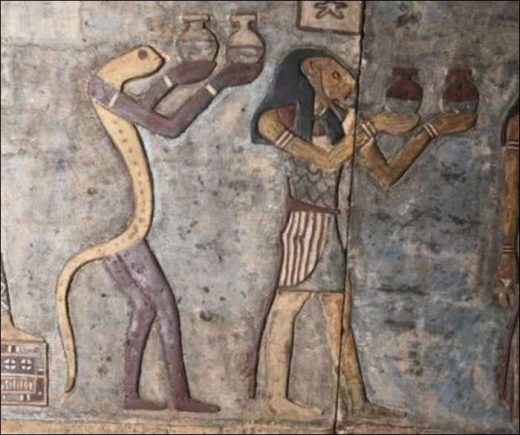Ancient Egyptian Zodiac depictions and inscriptions were found in the Esna Temple after 2,200 years during a restoration work in Egypt. Esna Temple, also known as the Temple of Khnum, is a temple complex dedicated to the Ancient Egyptian god Khnum, who was associated with fertility and water, and his wife Menhit and Nebtu, their sons Heka and the goddess Neith. The temple was built during the Ptolemaic period in Esna, Egypt, which was called Latopolis in ancient times.
During the restoration and recolouration work, the team found reliefs depicting the signs of the Zodiac and planets such as Jupiter, Saturn and Mars, in addition to a number of stars and constellations that served as guides for measuring time.
Over the centuries, the vibrant colors of these rare works were covered with a layer of dirt and soot. In this way, it was protected from external factors for approximately 2200 years. The existence of these artifacts in the temple was known to researchers, but cleaning and conservation works allowed them to be seen better. The team also unearthed depictions of snakes and crocodiles, along with images of various hybrid creatures such as a ram-headed snake and a crocodile-headed bird.
Christian Leitz, co-leader of the study team and professor of Egyptology at the University of Tübingen, says that this restoration work also revealed previously unknown inscriptions. According to Leitz’s explanation: “Zodiac representations in Egyptian temples are very rare. The zodiac itself is part of Babylonian astronomy and does not appear in Egypt until Ptolemaic times.”
The Ptolemies were a dynasty of rulers descended from one of Alexander the Great’s generals who ruled Egypt between 304 BC and 30 BC. Archaeologists think that the system of zodiac signs and their associated constellations did not appear in Egypt until they were introduced by the Greeks and were subsequently used to decorate private tombs and sarcophagi. Leitz states that the team is still in the process of analyzing the newly discovered artifacts.
Visits: 112



